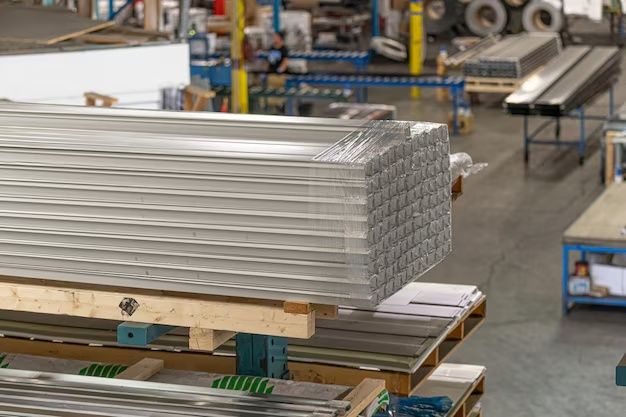Fiber sheets are versatile materials widely used in industrial, commercial, and residential applications. They are manufactured from a combination of natural and synthetic fibers, often reinforced for durability, flexibility, and resistance to heat, chemicals, or wear. Common types include cellulose fiber sheets, fiberglass, and resin-reinforced laminates.
Importance
Fiber sheets play a critical role in various sectors:

-
Structural and industrial support: They provide mechanical strength while reducing overall weight in construction, automotive, and aerospace components.
-
Insulation: Many fiber sheets act as thermal and electrical insulators, protecting sensitive equipment and ensuring workplace safety.
-
Durability and resistance: Modern fiber sheets resist corrosion, chemicals, and environmental wear, extending the life of equipment and structures.
-
Cost-effectiveness in production: Lightweight fiber sheets reduce transportation and handling requirements.
-
Sustainability and innovation: Certain fiber sheets incorporate recycled materials or bio-based fibers, contributing to eco-friendly practices.
Professionals in manufacturing, construction, electrical engineering, and packaging rely on fiber sheets for efficient and durable solutions.
Recent Updates
Over the past year, several trends have influenced the fiber sheet industry:
-
Advanced composite materials: In 2023–2024, fiber sheets are increasingly combined with resins and polymers to improve mechanical properties.
-
Sustainability initiatives: Eco-friendly fiber sheets made from recycled materials or bio-based fibers are gaining traction in global markets.
-
Digital manufacturing integration: CNC cutting, 3D printing, and automated handling systems enhance production precision and reduce waste.
-
Industry-specific innovations: Automotive and aerospace sectors adopt high-performance fiber sheets with improved thermal stability and strength-to-weight ratios.
-
Global supply chain adjustments: Manufacturers adapt to fluctuations in raw material availability, ensuring reliable fiber sheet delivery.
These trends indicate a move toward smarter, sustainable, and highly engineered fiber sheet solutions.
Laws or Policies
Fiber sheet production and distribution are governed by various regulations and industry standards:
-
Material safety regulations: Organizations like OSHA (U.S.) or REACH (EU) regulate the handling and composition of synthetic fibers and resins to ensure workplace safety.
-
Environmental compliance: Eco-labeling and restrictions on hazardous substances ensure fiber sheets meet environmental protection standards.
-
Trade and import/export laws: Countries may impose standards for fiber sheet quality, certifications, and labeling to maintain market consistency.
-
Industry-specific standards: Electrical and automotive sectors often require fiber sheets to meet ISO or ASTM specifications for insulation, strength, and chemical resistance.
-
Government programs: Certain initiatives encourage the use of sustainable materials in manufacturing and construction, promoting eco-friendly fiber sheets.
Compliance with these rules ensures safe handling, environmental protection, and consistent product quality.
Tools and Resources
Several resources support professionals in sourcing, understanding, and using fiber sheets efficiently:
-
Material databases: Platforms like MatWeb and CES EduPack provide detailed specifications on fiber sheets and composites.
-
Design software: CAD, SolidWorks, and finite element analysis (FEA) software enable precise modeling and simulation of fiber sheet applications.
-
Quality management tools: ISO standards and inspection checklists help ensure compliance and performance reliability.
-
Industry associations: Organizations like the Composite Materials Handbook or Fiberglass Manufacturers Association offer guidelines, reports, and networking opportunities.
-
Online resources and tutorials: Technical guides, webinars, and forums provide practical advice on fiber sheet selection, handling, and installation.
Example Table: Common Fiber Sheet Types and Applications
| Fiber Sheet Type | Typical Applications | Key Properties |
|---|---|---|
| Fiberglass | Electrical insulation, construction panels | Lightweight, high tensile strength, non-conductive |
| Cellulose fiber sheets | Packaging, acoustic panels | Eco-friendly, flexible, biodegradable |
| Carbon fiber sheets | Automotive, aerospace | Extremely strong, heat resistant, lightweight |
| Resin-reinforced sheets | Industrial machinery, protective panels | Chemical resistance, high durability |
| Hybrid composites | Structural reinforcement, specialty products | Enhanced mechanical and thermal properties |
This table highlights the diverse applications and properties of fiber sheets across industries.
FAQs
What are fiber sheets?
Fiber sheets are engineered materials made from natural or synthetic fibers, sometimes reinforced with resins, used for structural, insulation, or protective purposes.
Why are fiber sheets important in industry?
They provide strength, flexibility, insulation, and durability while reducing weight, making them ideal for manufacturing, construction, and electrical applications.
What are recent trends in fiber sheet manufacturing?
Recent trends include eco-friendly materials, composite reinforcements, digital manufacturing integration, and sector-specific innovations.
Which regulations apply to fiber sheet handling and usage?
Material safety, environmental compliance, trade standards, and industry-specific requirements ensure safe and reliable usage.
How can professionals select the right fiber sheet for their project?
Consider mechanical strength, thermal and electrical properties, chemical resistance, sustainability goals, and industry standards.
Conclusion
Fiber sheets remain a cornerstone in modern industrial and commercial applications. Their versatility, durability, and innovative advancements allow industries to optimize performance while adhering to safety and environmental standards.
With emerging trends in sustainability, digital production, and advanced composites, fiber sheets continue to evolve as essential materials for construction, manufacturing, automotive, aerospace, and specialized industrial applications. By leveraging available tools, resources, and regulatory knowledge, professionals can make informed decisions for efficient and responsible fiber sheet use.